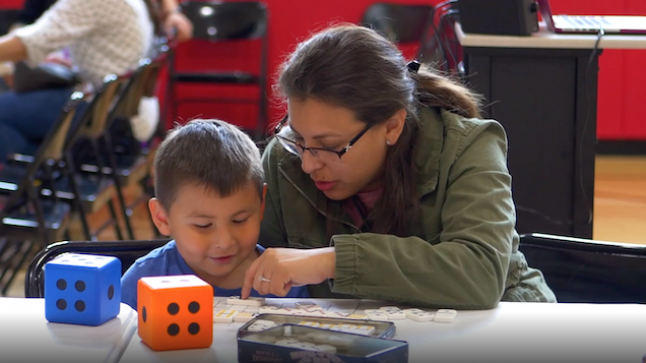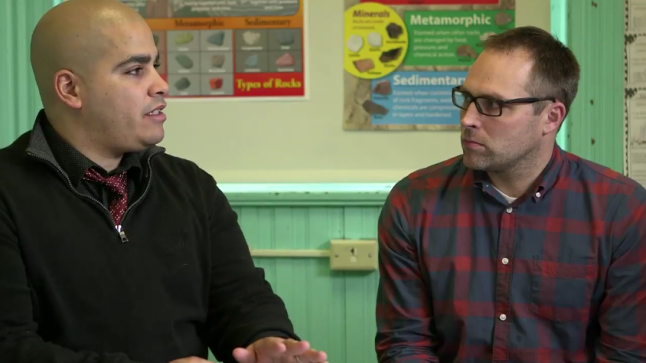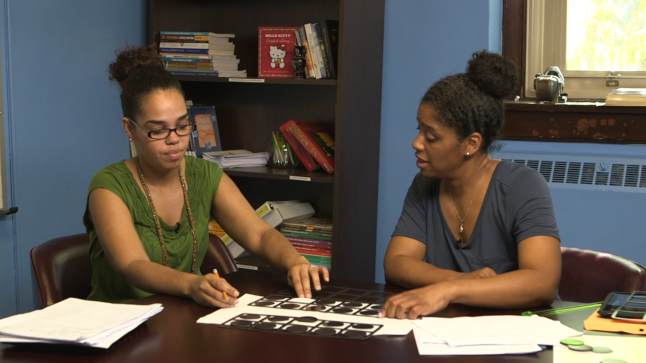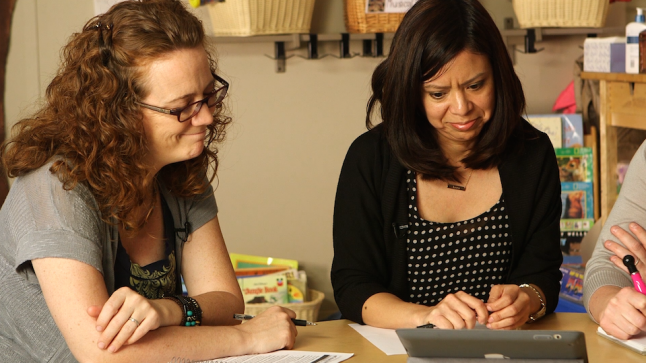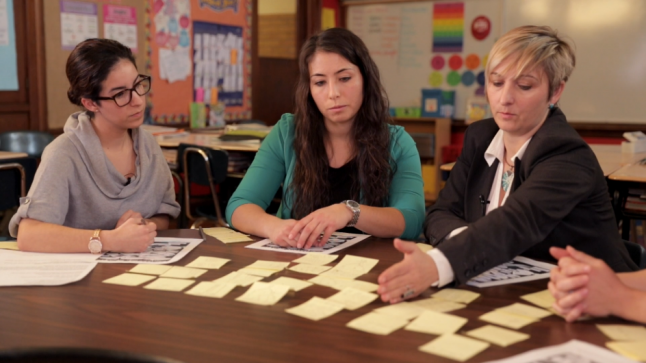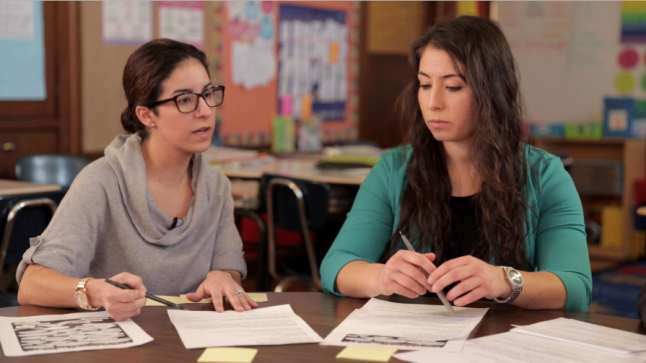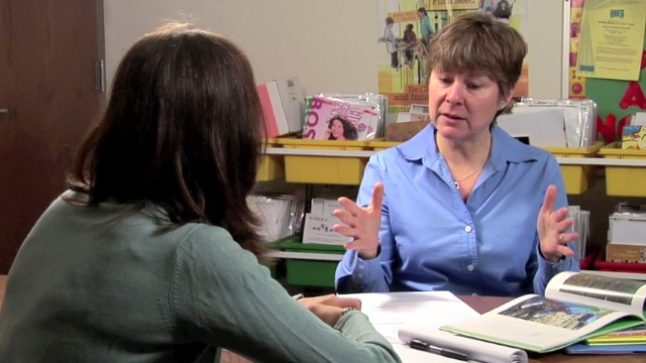Series: Focus on Collaboration
Series: Focus on Collaboration
School Event Engages Families in Early Math Learning
June 19, 2019
Families play a fundamental role in shaping children's interest and skills in math. Schools can help connect the math that exists both in and out of school and nurture families' positive relationship to math.
- Age/Grade Level: Infants, Toddlers, Pre-K, Kindergarten, 1st Grade, 2nd Grade, 3rd Grade
- Tags Games, Family Math
Series: Focus on Collaboration April 11, 2017
Focusing on What Teachers Learn From Student Work
Analyzing student work has many benefits, from better understanding children's current mathematical thinking to considering how to adjust instruction.
- Age/Grade Level: Pre-K, Kindergarten, 1st Grade, 2nd Grade, 3rd Grade
Series: Focus on Collaboration June 30, 2016
Teachers Learning from Other Teachers
At Chase Elementary in Chicago, teachers from PreK to 5th grade meet regularly in grade level teams with the goal of sharing their practice.
- Age/Grade Level: Pre-K, Kindergarten, 1st Grade, 2nd Grade, 3rd Grade
Series: Focus on Collaboration January 26, 2016
Planning and Reflecting with a Ten Frame Number Talk
These two first-grade teachers plan a visual number talk together using ten frames. After both try it, they reflect on the strategies that students used.
- Topic: Number Operations
- Age/Grade Level: Pre-K, Kindergarten, 1st Grade, 2nd Grade, 3rd Grade
- Tags Number Talks
Series: Focus on Collaboration December 9, 2015
Analyzing Video in a Grade Level Meeting
In this video, a team of preschool teachers looks at video from a classroom to find and discuss evidence of student thinking.
- Topic: Sets
- Age/Grade Level: Pre-K
- Tags Grade level meeting
Series: Focus on Collaboration October 20, 2015
Anticipating and Sorting Student Responses in a Grade Level Meeting
After choosing a common task, the teachers in this grade level meeting anticipate student responses, then sort and sequence them by level of complexity.
Series: Focus on Collaboration October 19, 2015
Selecting a Common Task in a Grade Level Meeting
During the first part of this grade level meeting, teachers work together to select a problem to give to their students. Looking at several different options, they discuss the strengths of each problem, as well…
Series: Focus on Collaboration October 18, 2015
Reflecting Conversation for Shoe Graph Lesson
In this conversation, a teacher reflects on the successes and difficulties of a recent lesson. With a coach, she discusses the successes of the lesson, as well as details to improve on next time.
- Age/Grade Level: Pre-K, Kindergarten
- Tags English Language Learner, Graphing, Shoes, Seasonal, Books
Series: Focus on Collaboration October 17, 2015
Planning Conversation for Shoe Graph Lesson
In this planning conversation, a teacher and coach discuss some of their ideas and concerns about a forthcoming lesson. With a coach, she discusses some of her ideas and concerns about the forthcoming lesson.
- Topic: Data Analysis
- Age/Grade Level: Pre-K, Kindergarten
- Tags English Language Learner, Graphing, Shoes, Seasonal, Books, Planning
Do the math.
Free videos.
Free newsletter packed with ideas.
Free professional learning modules.
